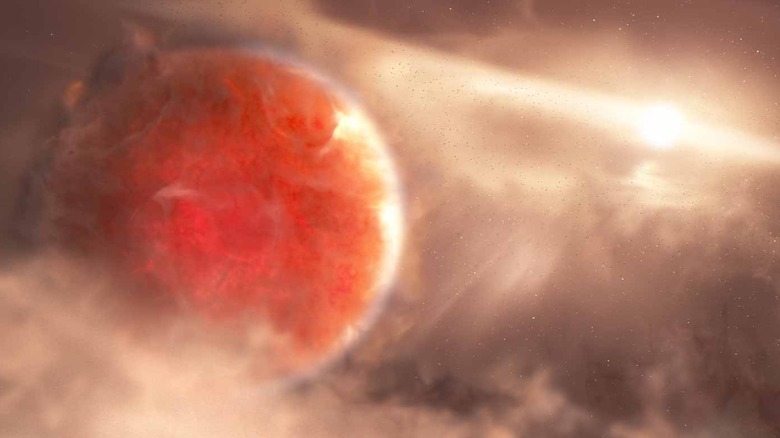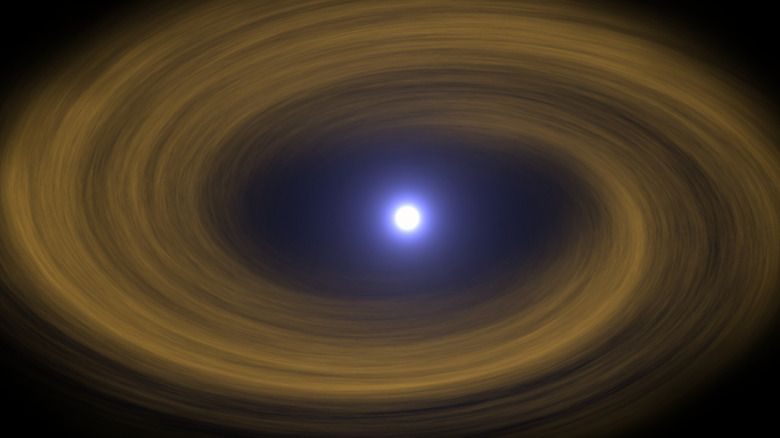Astronomers Spot A Baby Gas Giant In The Process Of Forming
Have you ever wondered how gas giant planets like Jupiter or Saturn were formed? In a study published in Nature, astronomers took a detailed look at the formation of a gas giant in a star system 505 light-years away from our own. This star system contained what researchers suggest may be evidence of the earliest stages of a gas giant being born for the first time.
At the center of this system is the star AB Aurigae, (also called AB Aur). This star is a relative youngster at around 2 million years old, making it approximately the same age our sun was when the planets were first formed in our solar system. One of the planets in this star system is Aurigae b, (also called AB Aur b), a surprisingly large gas giant with a mass around nine times that of Jupiter. Its size isn't the only unusual thing about this planet though, as AB Aur b was spotted at an extreme distance from its star. Orbiting at 8.6 billion miles away from AB Aur, this planet was found at around twice the distance Pluto currently orbits our own sun.
The international team used tools including the Subaru Telescope and the Hubble Space Telescope to observe the system and inspect the disk of gas around the star. Taken together, readings provided evidence of a truly enormous planetary body in its infancy.
"The spiral arm features we observed in this disk are just what we should expect if we have a planet with the mass of Jupiter or more in the presence of these dust structures," said one of the authors, Kevin Wagner, in an interview with the University of Arizona. "A massive planet should perturb them into exactly like what we are seeing here."
Competing theories about how planets form
The general consensus among modern astronomers is that gas giants are likely created in the protoplanetary disks of gas and dust that appear around newly formed stars. They aren't quite so sure of what sort of process must take place in order for said formation to occur.
The most commonly held view, called core accretion, is that the process begins when small pieces of matter collide and get stuck together, with the gravity of these bodies attracting more and more material over time. Eventually, there is enough material held together by gravity for a planet to form. The other theory, called disk instability, is that there is a large disk of matter which cools and breaks apart into planet-like chunks, which then develop into planets.
The discovery of AB Aur b is pivotal because it is so far from its star that it is unlikely to have formed by core accretion. It is more likely to have been a fragment from a disk, formed by a "violent and rapid process of gravitational collapse" described by astronomers in this new research.
The research suggests that because "most studies analyze the demographics of imaged, fully-formed planets to constrain planet formation," current expectations of the canonical core accretion model place said formations inside a range consistent with our own star system.
AB Aur and the protoplanet AB Aur b show direct evidence that a planet "more massive than Jupiter" can form at a distance that is "in striking contrast to expectations of planet formation by the canonical core accretion model." At the same time, observations of this newly discovered planet AB Aur b and its sun AB Aur show features that "bear an uncanny resemblance to models of jovian planet formation by disk instability."
According to lead author Thayne Currie, the study "sheds new light on our understanding of the different ways that planets form."

